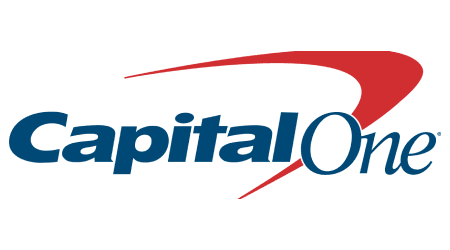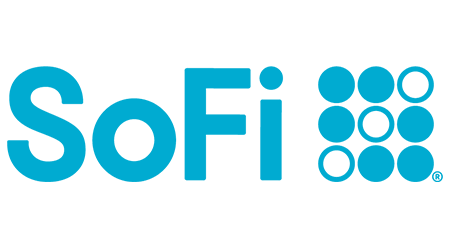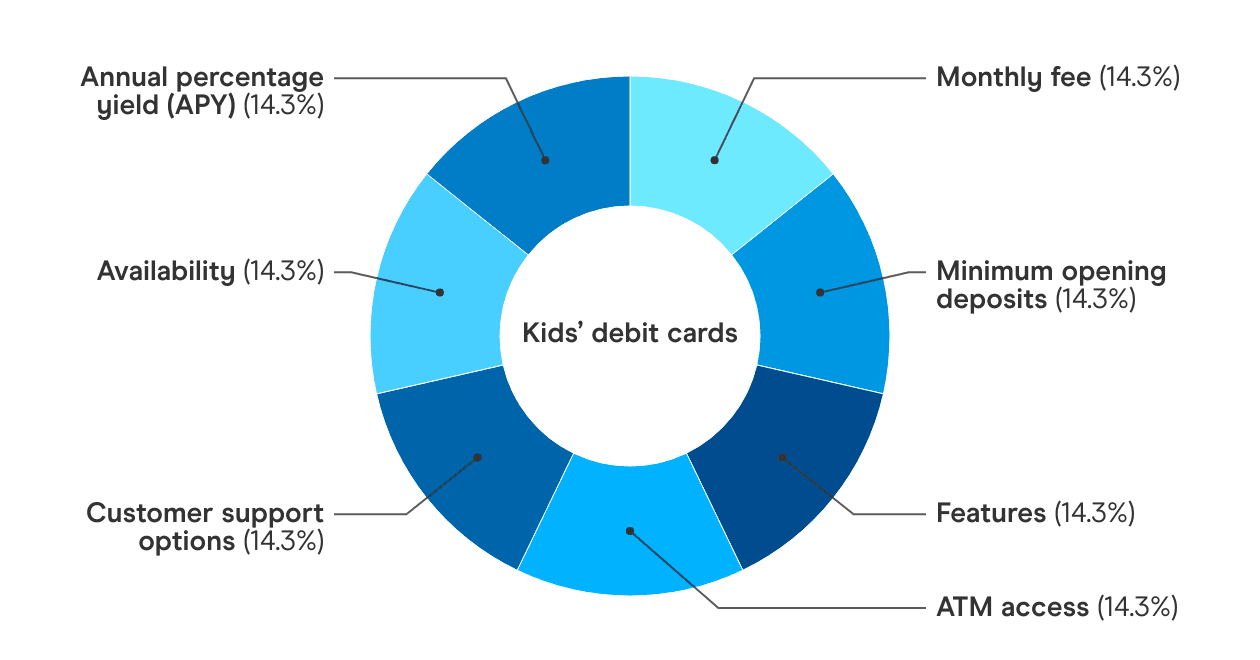Capital One MONEY Teen Checking Review

Capital One Money isn't available on Finder right now.
- Fee
- $0 per month
- APY
- 0.10%
- Minimum deposit to open
- $0
Our verdict
Give your kids their first checking account without any monthly fees.
This free teen checking account is for kids and their parents. Despite the name suggesting it’s only for teens, it’s actually available for kids as young as eight. With no monthly fees and no opening deposit, it’s an affordable way to get your kid their first checking account. Parents can open the account on their kid’s behalf, and both get their own mobile app logins. Kids can manage their funds on their own to learn good money management skills, while parents can monitor their account activity. There’s also a 0.1% APY on all balances, and the app has unique savings tools that let your kid split their money into either the “Spendable” or “Set Aside” category — both of which earn interest. But compared to other top kids’ banking options, parental controls are somewhat limited, since parents can’t set store- or category-level spending limits.
Best for: Kids and teens aged 8 and up.
Pros
-
No monthly fees or minimum opening deposit
-
Earns 0.1% APY on all balances
-
Savings tools
-
Teens 13+ can use Zelle
Cons
-
No chore-tracking features
-
No store- or category-level spending limits
Who is Capital One MONEY best for?
Capital One MONEY is designed for parents looking for an interest-bearing checking account for their kid. Kids aged 8 through 17 are eligible, so while “teen” is in the name, kids much younger can use it. And while it’s 0.1% APY isn’t as high, most checking accounts don’t offer any interest.
It’s also worth noting that Capital One doesn’t require parents to be existing Cap One customers to open the teen account. You can connect any external account if you’re not currently a customer. This is a worthwhile callout, considering Chase requires parents to have a qualifying Chase checking account to open the Chase First Banking account.
What we like about Capital One MONEY
Few fees, wide age acceptance, a login for parent and kid, and spending limits, the Capital One MONEY account has great bones for a starter checking account.
Monitor balances and parental controls
Capital One’s MONEY account lets kids check their balance, deposit checks, set up direct deposit, update account information and enable real-time text and email alerts. As the primary account holder, parents can access the joint account, track their kid’s spending and lower their spending limits. Like most teen checking accounts, you can also set up “allowances,” which are just automatic recurring transfers you set up for your kid.
While Capital One is mostly an online bank, it accepts cash deposits — unlike the majority of online bank options. Teens can use Capital One, MoneyPass and Allpoint ATMs, which make up a network of more than 70,000. There are no fees to check balances, make withdrawals or make cash deposits within the network.
No monthly service or overdraft fees
The Capital One MONEY account doesn’t cost anything to open or maintain. There are no monthly maintenance fees, balance requirements, foreign transaction fees, overdraft fees or transfer fees. There’s also no opening deposit requirement.
If you’ve been comparing kids’ debit cards, you’ve likely found that most options, such as Acorns Early (formerly GoHenry) and Greenlight, aren’t free. While those banking apps are chock full of features, you’ll likely pay around $5 monthly per kid.
Wide age range
Many banks and credit unions require kids to be at least 13 years old to become a joint owner of a checking account, but Capital One MONEY accepts kids as young as 8.
At 13 years old, teens can use Zelle with their Capital One teen account with parental permission. They can send up to $500 per day via Zelle, and parents can lower that amount. At 18 years old, parents won’t have access to set limits on Zelle transactions.
Also, unlike most kid checking accounts, this one won’t automatically convert into another account once they turn 18. You won’t have to worry about the account closing or transitioning into a checking account that incurs monthly fees once they reach adulthood. But teens can roll over their account balance into a regular Capital One 360 Checking Account if they want to.
Spending limits
Like most kids’ debit cards, the Capital One teen account has spending limits. Account holders under 18 can’t spend or withdraw more than $500 per day or send more than $500 via Zelle per day. Parents can lower these spending limits, but they can’t increase them.
Savings goals and interest
Kids can sort their funds into either a Spendable or Set Aside category. These buckets aren’t separate accounts, and the money in the Set Aside category doesn’t earn a separate interest rate. The total balance of the account earns 0.1% APY.
Kids can also set up savings goals for the Set Aside bucket, and parents can reward their kids with bonus money once they’ve reached their set savings goal.
Also, if your child uses their debit card to draw from the Spendable bucket, but there aren’t enough funds, Capital One will access the Set Aside category in attempts to cover the transaction. If there aren’t enough funds to cover a transaction, Capital One rejects the transaction as there are no overdraft fees.
Where it falls short
The Capital One MONEY account has a lot going for it, but it has a few notable drawbacks. One of these is the parental controls and features are a little lackluster compared to other top kids’ debit cards.
For example, Greenlight lets parents set up custom spending limits for categories like gaming, restaurants and certain stores. There are also chore and allowance tracking, where parents can set up recurring or one-time chores that kids can check off and get paid for. But kids’ cards with these features usually charge monthly fees, so there’s a bit of a trade-off.
Capital One MONEY’s fees and access
| Type of fee | Fee details |
|---|---|
Monthly service | $0 |
Opening deposit | $0 |
ATMs |
|
Debit card fees |
|
Overdraft or nonsufficient funds | $0 |
Wire transfers |
|
Other fees |
|
Compare Capital One MONEY to other kids’ debit cards
Narrow down top kids’ accounts and cards by monthly fees and features.
What is the Finder Score?
The Finder Score applies to 45+ kids' debit card options. It takes into account the card's fees, features, age requirements, ATM access and more — this gives you a simple score out of 10.
To provide a Score, we compare like-for-like debit cards. So if you're comparing the best kids' cards with no monthly fees, you can see how card stacks up against each other by features, opening deposits and other benefits.
Customer experience
| BBB accredited | Yes |
|---|---|
| BBB rating | A+ |
| BBB customer reviews | 1.11 out of 5 stars, based on 1,857 customer reviews |
| Trustpilot score | 1.3 out of 5 stars, based on 2,899 customer reviews |
| Customer reviews verified as of | 13 March 2025 |
Capital One doesn’t have the best track record in terms of customer feedback, but it carries an A+ rating with the Better Business Bureau and is accredited. That rating is given based on how a business handles and responds to customer complaints — and Capital One has many.
There have been over 14,000 complaints in the last few years, and the majority are about grievances with credit cards, loans and bill payments. There are a few mentions of slow funding times and complaints that payments aren’t posted on Sundays, but we found no specific mentions or complaints about its kids’ account. And we couldn’t locate any direct mentions of the Capital One MONEY teen checking account on the Consumer Finance Protection Bureau, which we consider good news.
On Trustpilot, more negative reviews roll in. Most customers complain of poor customer service, the lack of 24/7 customer support and issues with bill payments.
Frequently asked questions
Can my kid open a Capital One MONEY teen account alone?
No, minors need an adult to open the account on their behalf. Once the minor is at least 18, they gain control of the account and spending limits and can convert the teen account into a traditional Capital One checking account if they wish.
Kids’ debit card ratings
★★★★★ — Excellent
★★★★★ — Good
★★★★★ — Average
★★★★★ — Subpar
★★★★★ — Poor
We analyze top debit cards for kids and rate them one to five stars based on factors that are most important to you. We rate kids’ checking accounts by these factors: Monthly fee, features, ATM access, customer support options, and availability. We also consider APY as a factor only for those that earn interest. We rate prepaid debit cards for kids by these factors: monthly fees, features, customer support options and account availability.
Read the full methodology of how we rate Kids’ debit card accounts.
Capital One Money is not currently available on Finder
Have you considered SoFi Checking and Savings?
Earn up to 3.80% APY on savings by meeting deposit requirements or by paying the SoFi Plus subscription fee every 30 days, and 0.50% APY on checking balances. Members without deposit requirements will earn 0.50% APY on both savings and checking balances. Turn on automatic savings or use the Roundups feature to help you reach your savings goals faster. Get up to $2M of additional FDIC insurance through a network of participating banks.
- 0.50% APY on checking balance
- Up to 3.80% APY on savings
- $0 account or overdraft fees
- Get up to a $300 bonus with direct deposits of $5,000 or more
Your reviews
Bethany Finder
Banking editor
You are about to post a question on finder.com:
- Do not enter personal information (eg. surname, phone number, bank details) as your question will be made public
- finder.com is a financial comparison and information service, not a bank or product provider
- We cannot provide you with personal advice or recommendations
- Your answer might already be waiting – check previous questions below to see if yours has already been asked
Finder only provides general advice and factual information, so consider your own circumstances, or seek advice before you decide to act on our content. By submitting a question, you're accepting our finder.com Terms of Use and Privacy and Cookies Policy.
This site is protected by reCAPTCHA and the Privacy Policy and Terms of Service apply.



